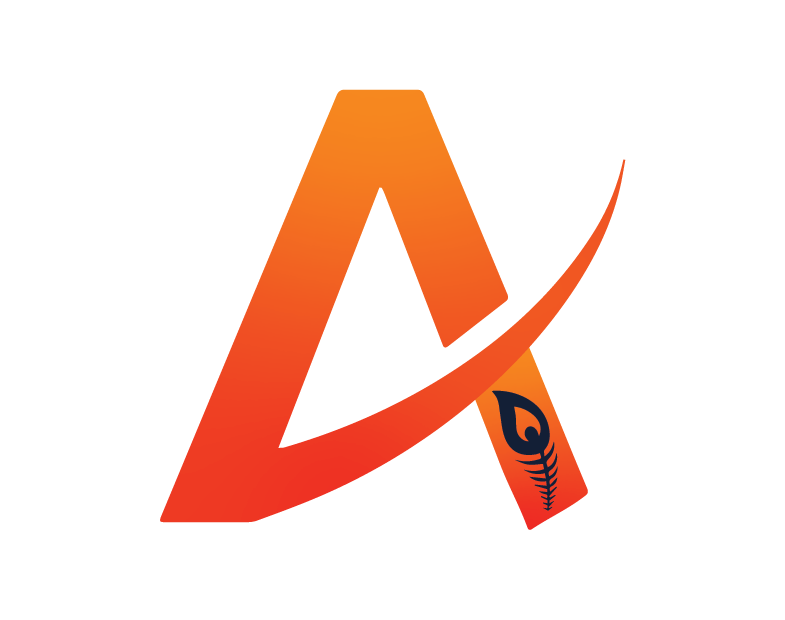Think of your landing page as the first impression that can make or break a potential customer’s journey on your website. It’s like a virtual storefront that needs to entice visitors, engage them with compelling content, and ultimately convert them into loyal customers. And that’s where landing page optimization comes in.
Whether you’re new to the concept or looking for some proven strategies to take your existing campaigns up a notch, this blog post has got you covered. We’ll delve into understanding your target audience, crafting irresistible headlines, designing high-converting layouts, mastering the art of persuasive call-to-action buttons, utilizing A/B testing for continuous improvement…and so much more!

The Importance of Landing Page Optimization
In today’s competitive online landscape, website landing page optimization is no longer just a nice-to-have; it’s an absolute necessity. Why? Because you’re landing page serves as the gateway to conversions, acting as a powerful tool to turn casual visitors into paying customers. The importance of optimizing landing pages are as:
User Engagement: By optimizing your landing pages, you can create a seamless and engaging user experience that guides your audience towards taking the desired action. Whether it’s making a purchase, signing up for a newsletter, or downloading an e-book, every click counts.
High Conversion Rates: One of the key benefits of landing page optimization is increased conversion rates. By understanding what makes your target audience tick and tailoring your content accordingly, you can significantly boost conversions and drive business growth.
Enhance Website Performance: Optimized landing pages help improve overall website performance by reducing bounce rates and increasing engagement metrics such as time on site and page views per session. When visitors are met with relevant and compelling information right off the bat, they are more likely to stay on your site longer and explore further.
Shows Professionalism: Remember: first impressions matter! A well-optimized landing page showcases professionalism while building trust with potential customers. It demonstrates that you understand their needs and have solutions tailored specifically for them – giving them confidence in choosing your product or service over competitors’.
So don’t underestimate the power of landing page optimization – it could be the game-changer that takes your online marketing efforts from good to extraordinary! Stay tuned as we dive deeper into specific strategies that will help supercharge those conversion rates even further.
Understanding Your Target Audience
When it comes to landing page optimization, one of the most crucial aspects is understanding your target audience. The more you know about who you’re trying to reach, the better equipped you’ll be to create a landing page that resonates with them.
Start by conducting thorough research on your target audience’s demographics, interests, and preferences. Use tools like Google Analytics or social media insights to gather data about their online behavior and engagement patterns.
Next, delve deeper into their motivations and pain points. What are they looking for? What problems do they need solving? By understanding these key factors, you can tailor your messaging and offer solutions that truly resonate with them.
Remember, effective targeting isn’t just about capturing attention; it’s also about building trust. Create buyer personas based on common characteristics within your target audience so you can craft personalized messages that evoke emotion and establish credibility.
Crafting a Compelling Headline
Your headline is the first thing that your visitors see when they land on your page. It’s like a virtual handshake, making that all-important first impression. A compelling headline grabs attention and entices visitors to stay and explore further.
To create an effective headline, it’s crucial to understand your target audience and what they’re looking for. Put yourself in their shoes and think about what would catch their attention. Use language that speaks directly to them and addresses their pain points or desires.
Keep your headline concise but impactful. It should clearly convey the value proposition of your offer or product. Use strong action words or numbers to make it more compelling.
Another important factor in crafting a compelling headline is framing it as a solution to a problem. People are naturally drawn towards things that promise solutions or improvements in their lives.
Don’t forget about the power of curiosity-inducing headlines. Humans have a natural tendency to seek answers, so posing questions or teasing intriguing information can pique interest and motivate visitors to read further.
Remember, the goal of crafting a compelling headline is not just grabbing attention but also creating enough intrigue for visitors to take the next step – exploring the rest of your landing page!
Design and Layout Tips
Design and layout play a crucial role in creating high-converting landing pages. When visitors arrive on your page, the first thing they notice is its visual appeal. A clean and professional design instills trust and encourages users to stay longer.
Here are some tips to optimize your landing page design:
1. Simplify the layout: Keep your design simple, with clear navigation and minimal distractions. Use ample white space to draw attention to important elements.
2. Choose colors wisely: Select a color scheme that aligns with your brand identity and evokes the desired emotions in your audience. Use contrasting colors for call-to-action buttons to make them stand out.
3. Optimize images: Use relevant, high-quality images that enhance your message without slowing down page loading times. Compress images for faster load speed.
4. Make it mobile-friendly: With mobile usage increasing rapidly, ensure that your landing pages are responsive and adapt seamlessly across different devices.
5. Prioritize readability: Use legible fonts, appropriate font sizes, and plenty of whitespace between text blocks to improve comprehension.
6. Be strategic with placement: Position key elements such as headlines, benefits statements, testimonials, and forms above the fold (visible without scrolling) for maximum impact.
Remember that every element on your landing page should have a purpose – guiding visitors towards taking action!
Call to Action: The Key Element in Driving Conversions
The call to action (CTA) is the key element in driving conversions on your landing page. It’s the moment when you ask your visitors to take a specific action that aligns with your business goals. Whether it’s signing up for a newsletter, making a purchase, or downloading an ebook, the CTA should be clear, compelling, and easy to understand.
To create an effective CTA, start by using action-oriented language that encourages immediate response. Use strong verbs like “buy now,” “sign up today,” or “download instantly” to instill a sense of urgency and motivate your audience to take action.
Using persuasive language, make sure your CTA stands out visually on the page. Utilize contrasting colors and bold typography so that it grabs attention and is easily clickable.
Optimize your CTA by ensuring that it leads users directly to a dedicated landing page or checkout process rather than just linking back to the homepage. This minimizes friction and makes it easier for visitors to complete their desired action.
Remember: Your call-to-action is not something you simply add as an afterthought – it’s one of the most crucial elements in driving conversions on your landing pages! So put time and effort into crafting a compelling CTA that entices users into taking action towards achieving their goals while aligning with yours
Utilizing A/B Testing to Improve Performance
Utilizing A/B testing can be a game-changer when it comes to improving the performance of your landing pages. This technique allows you to test different variations of your page and determine which one resonates best with your audience.
A/B testing is identifying specific elements on your landing page that you want to optimize. This could include headlines, call-to-action buttons, images, or even color schemes. By creating multiple versions of these elements and presenting them to different segments of your audience, you can gather valuable data on what works best.
When running an A/B test, it’s important to establish a clear hypothesis and set specific goals for improvement. For example, if you believe that changing the color of your call-to-action button will increase conversions, make sure to track the impact this change has on conversion rates.
It’s also crucial not only to rely on quantitative data but also consider qualitative feedback from users. Conduct surveys or interviews with participants who interacted with each version of your landing page. Their insights can provide valuable context and help explain why certain variations perform better than others.
Remember that A/B testing should be an ongoing process rather than a one-time experiment. Continuously monitor the results and make adjustments accordingly based on user behavior patterns and preferences.
Utilizing A/B testing is a powerful strategy for optimizing landing page performance. By systematically experimenting with different variations and analyzing the results, you can identify winning combinations that lead to higher conversion rates and ultimately boost the success of your online marketing efforts.
Continuously Monitor and Adapt for Ongoing Optimization
Once you have implemented your website landing page optimization strategies, the work doesn’t stop there. In fact, it’s just the beginning. To truly boost your conversion rates, you need to continuously monitor and adapt your landing pages for ongoing optimization.
Tracking the performance of your landing pages is crucial in understanding what works and what doesn’t. Use analytics tools to gather data on key metrics such as bounce rate, time on page, and conversion rate. This will give you valuable insights into how visitors are interacting with your landing pages.
Based on this data, make informed decisions about what changes or tweaks need to be made. It could be adjusting the layout or design elements, rewriting a headline or call-to-action copy, or even testing different variations of elements through A/B testing.
Remember that optimization is an iterative process; it requires constant monitoring and adjustment based on user behavior and feedback. Don’t be afraid to experiment with different approaches to see what resonates best with your target audience.
In addition to tracking metrics, actively seek out feedback from users through surveys or usability testing. This qualitative data can provide deeper insights into why certain elements may not be performing well and help inform future optimizations.
Stay up-to-date with industry trends and best practices in landing page optimization. The digital landscape is always evolving so it’s important to stay ahead of the curve by keeping an eye on emerging techniques or technologies that can enhance your conversions.
By continuously monitoring and adapting for ongoing optimization, you’ll ensure that your landing pages remain effective in driving conversions over time. Remember: optimizing is not a one-time task but rather an ongoing commitment towards improving results!
Keep refining and fine-tuning until you achieve optimal conversion rates – because when it comes down to it – every little improvement counts! So keep experimenting, analyzing, tweaking…and watch those conversions soar!
Conclusion
Maximizing the conversion rates of your landing pages is crucial for the success of your online business. By implementing these proven landing page optimization strategies, you can significantly increase your chances of turning visitors into valuable customers.
Remember to start by understanding your target audience and tailoring your messaging accordingly. Craft a compelling headline that grabs attention and encourages users to stay on your page. Pay close attention to the design and layout, ensuring it is visually appealing, user-friendly, and optimized for mobile devices.
The call-to-action (CTA) button is perhaps the most critical element on your landing page. Make sure it stands out, uses persuasive language, and clearly states what action you want visitors to take.
Utilize A/B testing to experiment with different variations of elements on your landing page. This will help you identify what works best for driving conversions and make data-driven decisions in optimizing performance.
Remember that optimization is an ongoing process. Continuously monitor visitor behavior using analytics tools and adapt as needed to improve results over time.
By following these strategies and staying committed to refining your approach based on data insights, you’ll be well-equipped to boost conversion rates on your website’s landing pages. Start implementing these tips today and watch as more visitors become loyal customers!


